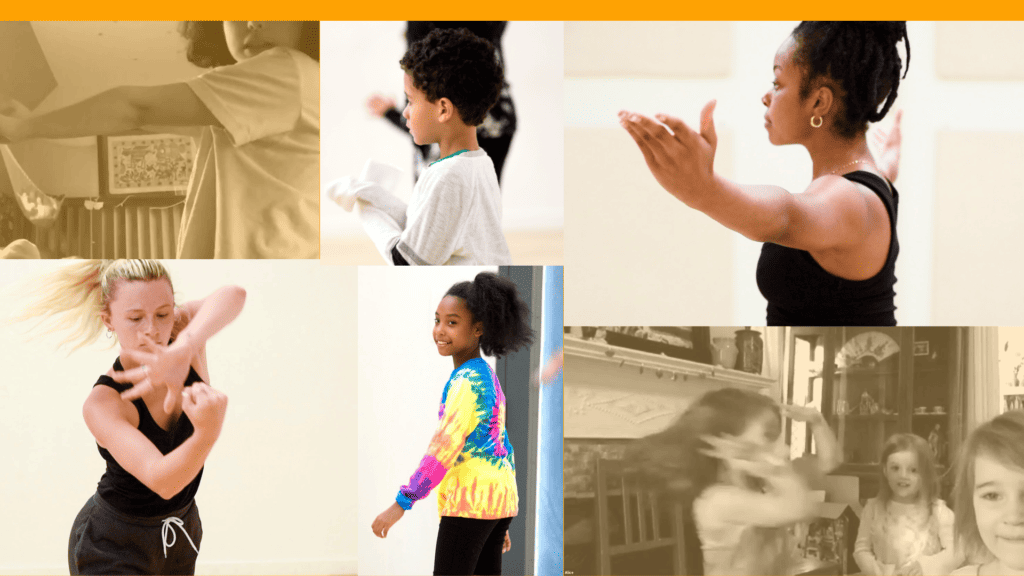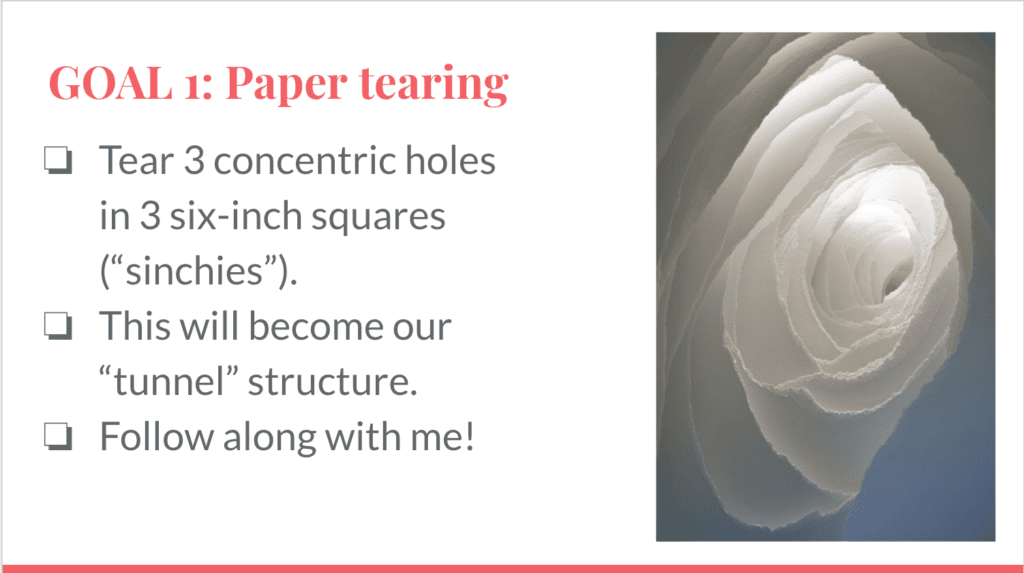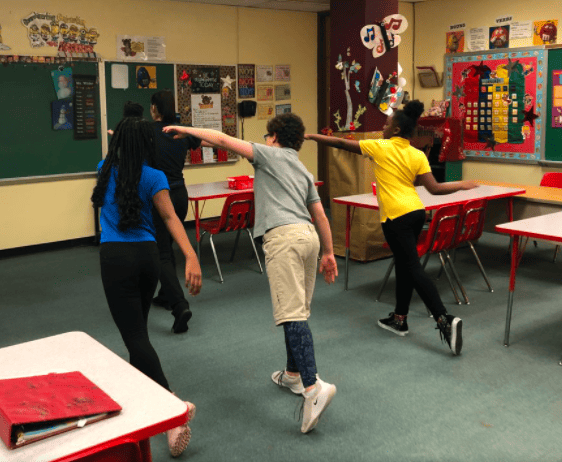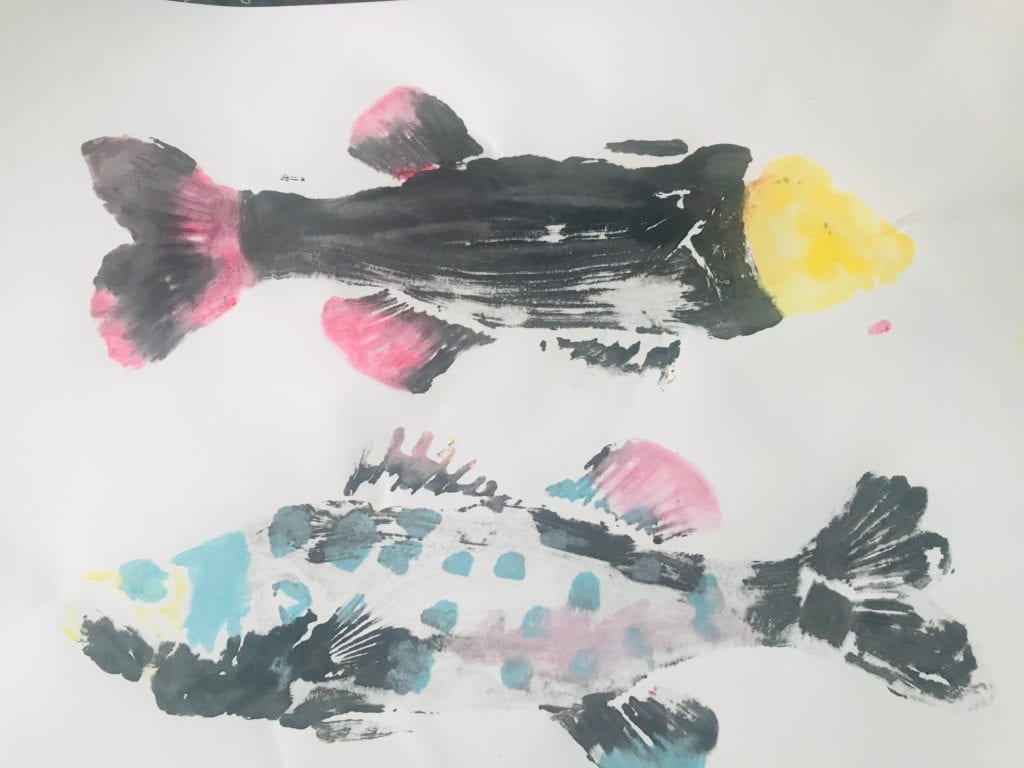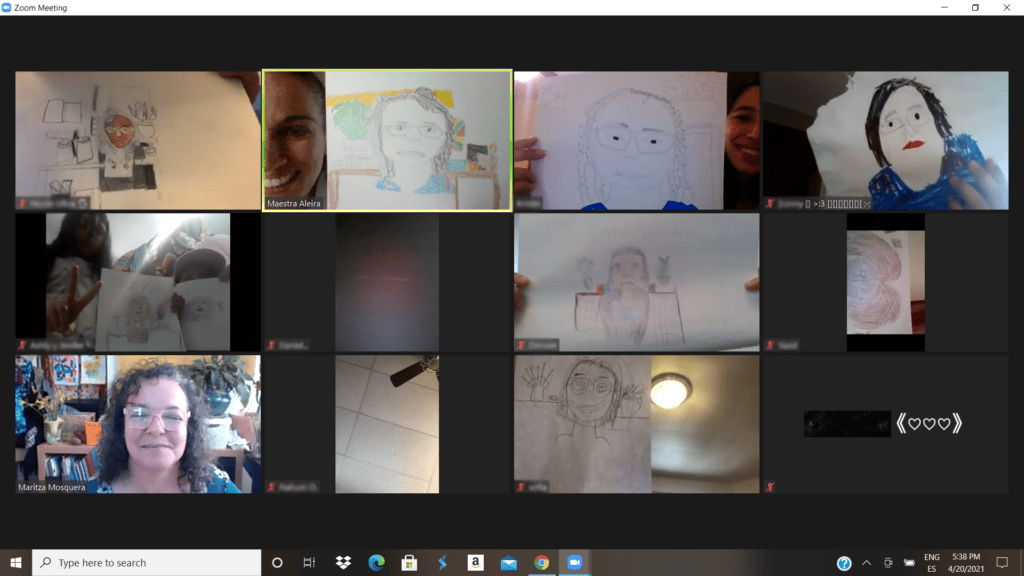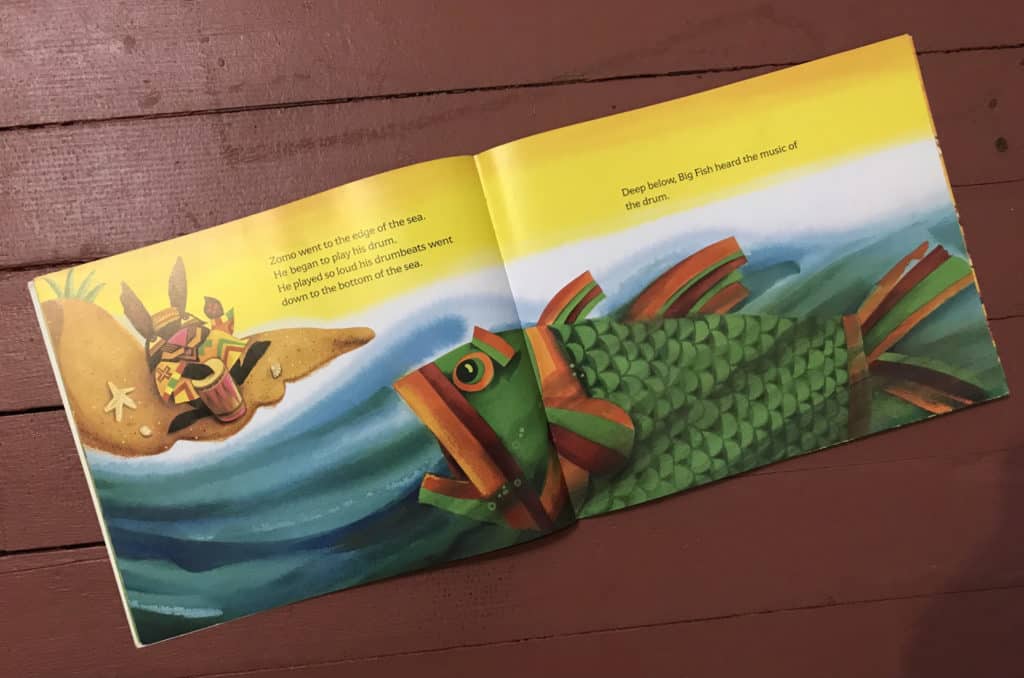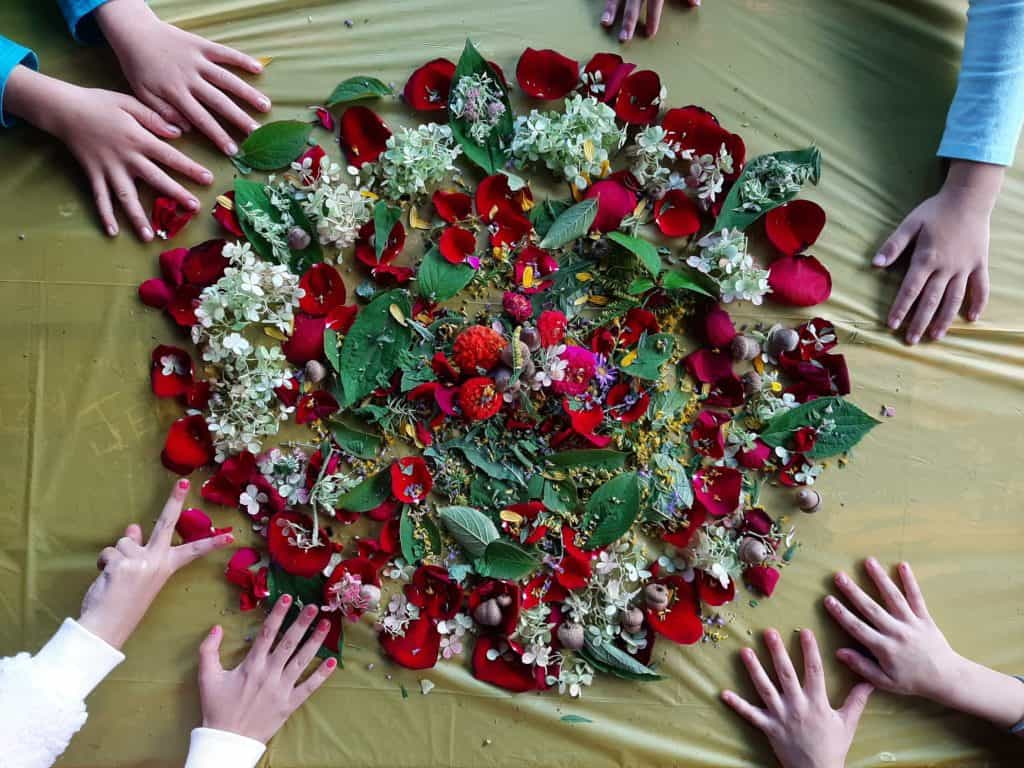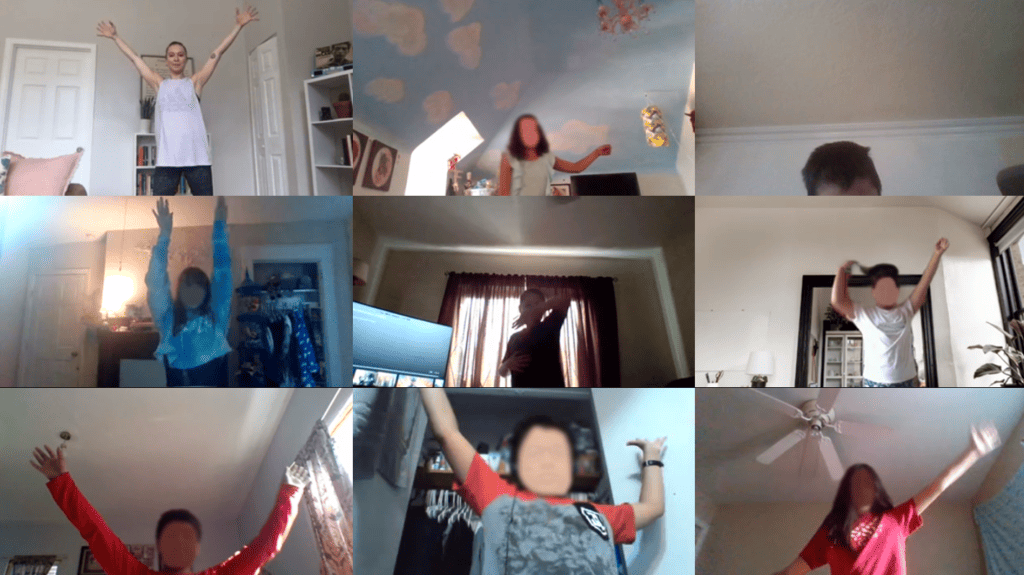Artists in Schools & Communities
highlights
Virtual Residency Projects 2019-2021
Our amazing Teaching Artists responded to the pandemic with innovation and empathy, adapting their artistic processes to remote learning in so many incredible ways. Learn more about virtual projects undertaken during the 2019-2020 and 2020-2021 program years below. Many of our school and community partnerships have developed over many years–click on individual school and community Highlights pages to learn about how projects have shifted formats to adapt over the last few years!
- In response to the pandemic, Teaching Artist/puppeteer Tom Sarver developed the Virtual Puppetry Residency (VPR) in spring 2020. VPR is an online program for those interested in advancing their performance and concepts in the art of puppetry. The six-week program is designed for adults of all skill levels, building a worldwide community of participants from a variety of backgrounds. Each week, participants respond to various prompts, including creating short puppet shows and then performing them on Zoom for critique and discussion. While engaging in the program, participants are encouraged to work on one or more independent projects. Each season culminates in an online public showing of live performance and video work.
- Season 1, the pilot program for VPR, took place in June of 2020. Twenty residents from seven countries participated. The season featured artist presentations by guest artists Zach Dorn and Katy DeMent. Participants presented their work in an online event, International Puppet Slam, on July 18th, 2020.
- In Fall of 2020, Season 2 of Virtual Puppetry Residency featured an expanded program with two cohorts of artists. Guest artists included Felicia Cooper, Dave English, Conni Mulligan and Sam Turich. Thirty-one artists from thirteen countries presented work in a final showing, International Puppet Festival, on December 12th, 2020 in a daylong event that featured shows for children, all-ages and adults.
- In Season 3, Virtual Puppetry residency expanded its global scope to seventeen countries. Sessions began in February 2021 with fifty resident artists. Guest speakers included Peter Court, Eli Nixon and Jeghetto. The program culminated with a celebration for World Puppetry Day weekend, with a two-day event, Open House, featuring shows for children, all-ages and adults on March 20th and 21st.
- During the 2020-2021 school year, Teaching Artist/photographer Kara Sambrick continued her working relationship with Allegheny Intermediate Unit 3, translating the high school digital photography workshops she has taught on-site at PCA&M for many years to virtual sessions for AIU3‘s Career Connections. This Residency Project was designed to introduce students to the art of digital photography. Students learned about manual camera controls, composition, lighting, and other photography topics. Through various assignments, students learned to use photography as a tool in storytelling resulting in a final photography portfolio.
- In Fall 2020, PCA&M Interdisciplinary Artist/Teaching Artist Maritza Mosquera worked virtually with Pittsburgh Westinghouse Academy 6-12 art teacher Kelly Hinnebusch and 18 of her 8th grade students during a 10-day Artist Residency Project: This is My Place 2020, a portrait of those who live here. Students explored paintings by artists Amy Sherald, Kerry James Marshall, and Kehinde Wiley, which were used to instigate conversations and guide ideas. The artists and artworks provided inspiration for students to create their own works in text, drawing, collage, watercolor and acrylic paintings.Maritza also used the Universal Declaration of Human Rights as a conversation and idea instigator. Guiding questions: What’s in a name? Where is my place?Student comments: “Thank you for all your help in teaching us something new.” “I have learned to try to make self-portraits and it was helpful the time you spent with us. I will try to not give up when I don’t like my work.” “I learned that anything can be art no matter what it is, it’s still art. I appreciate you (a}nd thank you for being here.”
- In summer 2020, Teaching Artist/papermaker Katy DeMent continued her work with Creative Citizens Studios in a 10-session Artist Residency Project, A Journey to the Imagi-Nation, which provided access to digital art classes for 15 participants, some of whom live outside of Allegheny County. Katy has been working, learning, and creating with this group of differently abled artists, ages 13-67, for over five years! After preparing art kits for participants, participants explored how to use and adapt various art tools such as paints, canvases, pencils, charcoal, colored pencils, and pastels to create innovative maps (and map keys), portraits, postcards, creative journals, travel posters, and paintings illustrating their imaginary transportation, companionship, landscapes and so much more!
- In June of 2020, Teaching Artist/interdisciplinary Maritza Mosquera explored virtual artistic connection on an international scale, with Art with Mom© She wrote: “[The project] lead students of all ages and in various parts of the world on creative works based on a variety of anchor artists and ideas. Using a variety of mediums the 28 member Facebook group from various parts of the world including Pittsburgh, Pennsylvania, Australia, New Zealand and Ecuador, explored watercolors, collage, printmaking, multi-media visual arts and drawing. They learned about artists and their moms and moms who are artists.” The project mixed synchronous and asynchronous content, social media engagement, art history, dialogue, and discussion to beautiful results.
- In March 2021, fifty kindergartners in two classrooms at Pittsburgh Beechwood PreK-5 learned/created with Teaching Artist/interdisciplinary artist Lindsay Woge in “break-out rooms” of 6-7 children to work toward brainstorming, composing, and publishing multiple original collaborative stories using facial expressions, handmade props, and sound-effects as well as elements of narrative, such as setting, character, and plot. The students got into the storytelling mood each session while meeting crazy characters, rewriting fairy tales, and learning silly songs.
- During the 2020-2021 program year, Teaching Artists Staycee Pearl/PearlArts created The Virtual Youth Dance Combo Program, a Zoom-based 10-session dance program in partnership with Kelly Strayhorn Theater. This virtual residency taught two age groups the fundamentals of creative movement, ballet, and hip hop. Students age 6-8 explored creative movement and hip hop every week and were introduced to new vocabulary, channeling their natural energy and expressiveness. Students age 9-12 committed to studying five weeks of ballet history and techniques then spent five weeks integrating their discoveries in old school breakdance and house phrases. By the end of the program, children embodied a well-rounded dance vocabulary and gained insight into dance’s impact on cultural history.
- In October 2020, Teaching Artist/interdisciplinary artist Lindsay Woge worked with fifty fifth graders in two core groups at Pittsburgh Roosevelt PreK-5 on The Light that Shines from Within, exploring how artists convey emotions and ideas using the “language” of visual arts (line, shape, form, color, composition, etc.). From exploring the art of the emoji to deeply discussing the use of metaphor in abstract works of art, learners dove into the world of symbolism, while generating and displaying symbols of their own inner strengths as free-standing paper sculptures.
- Teaching Artist/ceramicist Laura Jean McLaughlin worked with Winchester Thurston Upper School art teacher Mary Martin to bring her 9th grade clay class a virtual experience that enabled students to explore a variety of materials centering around the theme of Journey. Laura Jean writes: “In the uncertain times during the pandemic, we encouraged the students to play, use their imaginations, and to collaborate with one another virtually. We sent packages to students that included materials such as watercolors, plasticine, and scratchboard. Students explored coffee painting with household materials such as rice and salt and included the watercolors. We created journey vessels out of the plasticine thinking about what you would take on a journey if you could only choose three items. The exquisite corpse game was played by cutting out images that were sent to the students in the packages which included head, shoulders, knees, and toes of old stock black and white imagery. It was fun to see the variety of images that the students came up with. The scratchboard imagery that the students created described an imaginary journey that the students were taking. It was a joy bouncing ideas off one another during our critiques about the work that we shared with each another.”
- Attack Theatre continued their third year of partnering with 4th grade students at Barrett Elementary School in the Steel Valley School District, focusing on dance and creative writing during a mix of asynchronous and hybrid workshops. Students physically explored the transformation of ideas, shapes, movements and dance compositions while being inspired by everyday life and other art forms. Working collaboratively, students developed dance choreography that was inspired by poetry and other works of art, followed non-verbal directions including basic American Sign Language, and engaged in self-reflection and critical feedback of their performances.
- In the summer of 2020, Attack Theatre began a new partnership with Propel After School, providing a variety of virtual workshops focusing on creative movement, nonverbal communication, and empowerment through dance for students K-8. Students identified actions and movement in life and translated them into representational movement and movement sequences, expressed emotions through movement, and culminated their residency with a virtual after-school celebration.
- Teaching Artist/interdisciplinary artist Maritza Mosquera partnered with Latino Community Center’s SOY (Supporting Our Youth) after school program. Located at Pittsburgh Beechwood PreK-5, the bilingual program was created to improve academic outcomes for Latino youth, while simultaneously building students’ pride in their native language and heritage. SOY Pittsburgh Elementary addresses four main goals: academic advancement, cultural empowerment, social-emotional development, and family engagement. In 2020, Maritza virtually worked with elementary students to create unique works of art in a variety of mediums including: pencil drawing, coloring, watercolor painting, printmaking, collage, assemblage and ceramics.Students were inspired by a variety of artists from Central, South and North America who are both nationally and internationally renowned for the beauty and strength of work. Included were Frida Kahlo, Peruvian Weavers, Henry Matisse, Pablo Picasso, Fernando Botero and Marisol. In 2021, Maritza virtually worked with middle school students, exploring relief printmaking in various forms: Relief “Fish” Printmaking called Gyotaku, Portrait/Animal Collagraphs, and Found Object Repeat Printmaking Design. She additionally worked with elementary students to explore drawing from life, air dry clay, and various forms of artmaking.
- During 2020, students at Latino Community Center‘s SOY after school program also worked with Teaching Artist/painter Alison Zapata. The students pivoted from weekly in-person to online instruction during the pandemic, and focused on Latin American Folk Art. They used drawing, painting, and collage techniques while creating Argentine guitars and learning about tango music. They also painted Perivian llamas and Our Lady of Guadalupe based on art from Honduras, and collaged Mexico nichos, with their weekly time together serving as a bonding experience for the group during difficult times.
- In 2021, Pittsburgh Beechwood PreK-5 third graders learned the protocols for masquerade artists from parts of the Caribbean, the U.S Gulf states and South/Central America with Teaching Artist/interdisciplinary artist Celeta Hickman. They created songs, dances and handheld instruments that build unity, civility and collective joy within masking troops and their communities. They listened to and offered criticism on Latin Jazz, Soca, Samba and Bossa Nova music genres. Celeta shares more about the project:Because masquerade processions are very community and family based, we shared how family members and friends we love like to dance. We learned to dance to melodic and up tempo Caribbean music and how to build choreography. The most exciting work for the children at home and in the school building was observing children in Trinidad and Tobago during a Kiddie Carnival – this helped them understand the context of masking culture in the Lesser Antilles and Brazil. We compared and contrasted Halloween with Afro-Caribbean masquerades and the children noticed carnival culture goes much deeper. Our mask-making focuses on the grand masquerades of Brazilian Carnival and some of the children had their pieces made before we asked for them. Beechwood Maskers are some of the best dancers in the city!
- Also taking place virtually during spring 2021 at Pittsburgh Beechwood PreK-5, Teaching Artist/movement artist Joanna Abel worked with three 2nd grade classrooms exploring fables and trickster tales through movement, dance, and performing arts! Anchored by virtually reading the multicultural trickster tales illustrated by Gerald McDermott, the student groups created movement sequences by learning about how the animals in the stories move in the real world, expressed emotions, and investigated new and innovative ways to move their bodies to show a theme or idea. They also learned about the parts of a trickster tale and created one of their very own to close out the sessions.
- In fall 2021, Teaching Artist/painter Alison Zapata worked with a Girl Scout Brownie troop in the East End of Pittsburgh to offer a series of virtual and in-person workshops so that troop members could enjoy positive social interaction, work with a professional artist, explore the outdoors, and to learn four badges! For the Art in the Outdoors badge, Alison showed the girls how to create fabric hand-dyed banners using natural and manmade materials. We also made collaborative Mandalas with flowers and natural materials found in the park. For the Painting badge, the girls painted flowers in the park from observation in pencil and sharpie. We also learned how to draw and paint trees in the park from observation. For the Pottery badge the students worked in clay to create beaded necklaces and pressed stamped leafs. For the Storytelling: My Family Story badge, the students worked with Alison to create a family collage using her special layered techniques. The students interviewed their families prior to the class and gathered family pictures to include in the collage.
- In May 2021, Teaching Artist/metalsmith Lindsay Huff collaborated with Highland Middle School art teacher Leslie Kunkel to create upcycled/repurposed object mobiles with approximately fifty students–two classes of 6th graders, and one class of 8th graders. Students explored elements of design and were inspired by Alexander Calder, Keith Haring, mandalas, and Zentangle-style drawings. Utilizing repurposed venetian blind slats, scrap wood, electrical wire, yarn, beads, and other found objects from home, the students created individual hanging sculptures, then engineered way to combine them with peers’ pieces to form joyful and vibrant mobiles that were installed throughout the school.
- This spring at Pittsburgh Beechwood PreK-5, PearlArts facilitated a virtual 10-session dance program designed to engage the story elements from the young-adult novel “Esperanza Rising.” In each session, students in 5th grade focused on emotional, environmental, and social concepts from the novel and translated these ideas into movement, exploring shapes, levels, rhythm, and spatial awareness throughout. Additionally, PearlArts teaching artists guided lessons on identity and resilience by integrating the perspectives of the novel’s characters. By the end of the program, students embodied basic dance vocabulary and a humanistic comprehension of storytelling.
- Also taking place at Pittsburgh Beechwood PreK-5 this spring, Attack Theatre worked with fourth grade students to connect creative movement with earthquakes and natural disasters, with inspiration sourced from the ELA curriculum and historical fiction novel “The Earth Dragon Awakes: The San Francisco Earthquake of 1906.” Students identified actions and moments in life and in the book and translated them into representational movements and movement sequences and worked collaboratively to create short dance choreography. The students explored a variety of dance styles while performing for their peers and expressing emotions through movement.
- In spring 2021, Teaching Artists Lindsay Woge (interdisciplinary artist) and Ryan Ian McCormick (painter) collaborated with 3rd grade students at Pittsburgh Greenfield PreK-8 to explore the theme “A Thousand Fibers Connect Us.” Students worked collaboratively with Lindsay to use visual thinking strategies to connect and brainstorm with peers and to explore contemporary and traditional fiber artists. They explored line, shape, yarn, and wire to create a pair of wire wall hangings “that represent the myriad ties that bind us to each other and to the living systems of the earth.” The final pieces integrated simple, free-verse poetry and considered the context of “after a year of distance learning, we are apart, yet we are together.” Then with painter Ryan Ian McCormick, students learned how trees communicate with each other through underground root networks, creating a watercolor of an Eastern Hemlock on a postcard that could be mailed to a loved one, and creating a watercolor of a Cherry Blossom with an original haiku on the theme of Earth Day. The haiku’s words represented the trees underground connections through a fungus called Mycorrhiza!
- In July/August 2020 Teaching Artist/percussionist Jeff Berman worked with students from the Kentucky Ave School on a 10-day residency project of creating rhythms inspired by music from different regions of the world and “coding” those rhythms into visual representations of the music. The group explored different elements such as dynamics, pitch, accents, syncopation, “ghost-notes”, tempo, and phrasing that bring shape, form and life to the music. Students all contributed ideas for creating a language of what the sound of these rhythms could look like by using visual symbols to represent these elements. The results were abstract images containing different size numbers and letters, arrows, and other symbols that took on a concrete meaning once you knew “the code”.



















